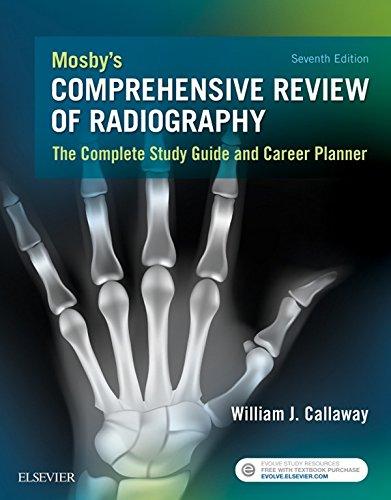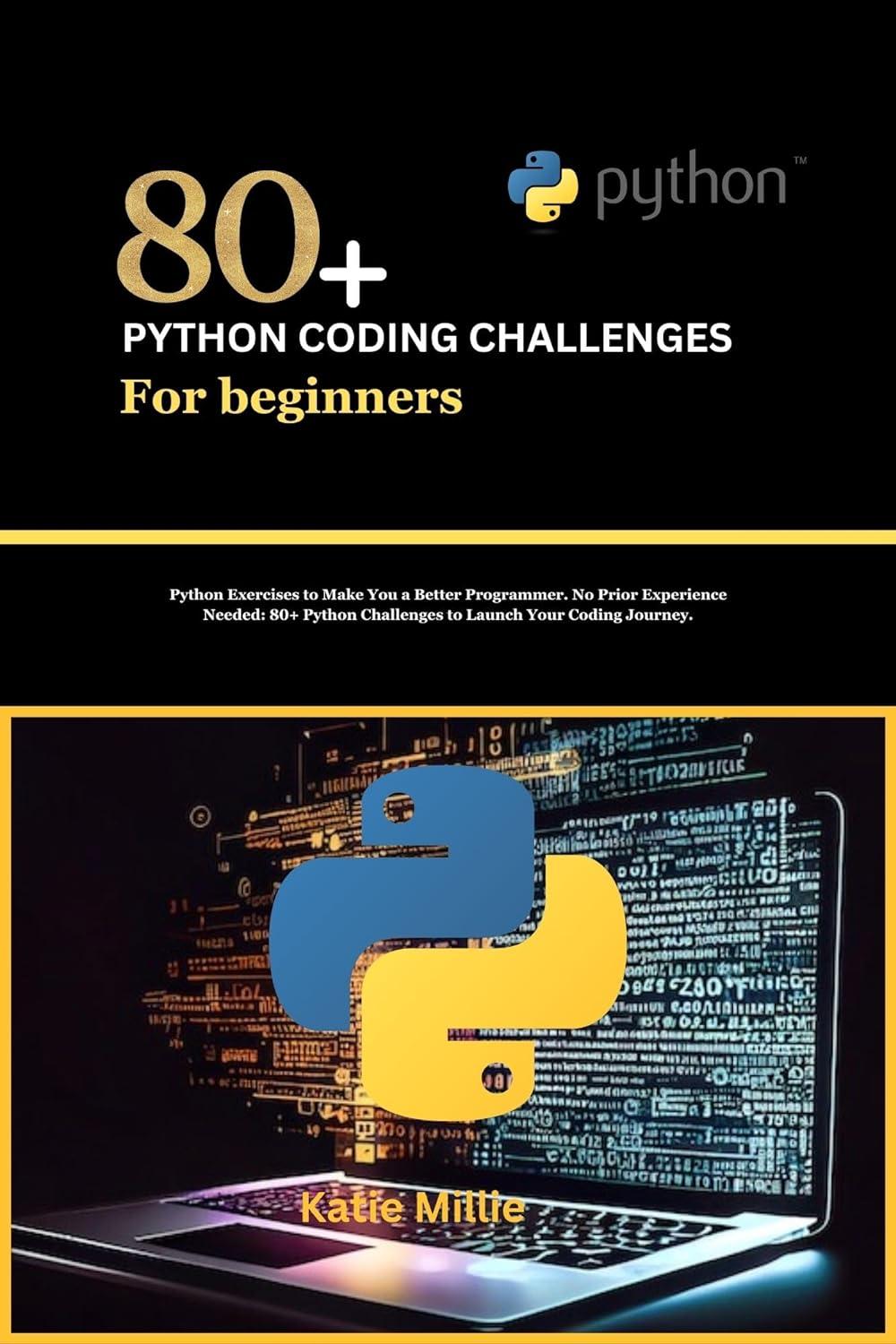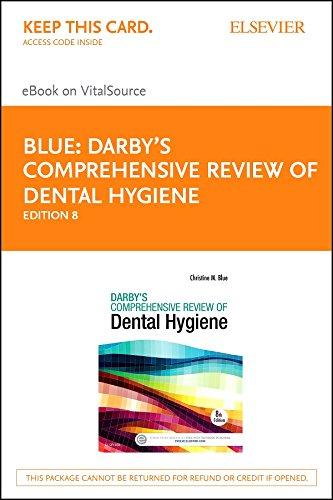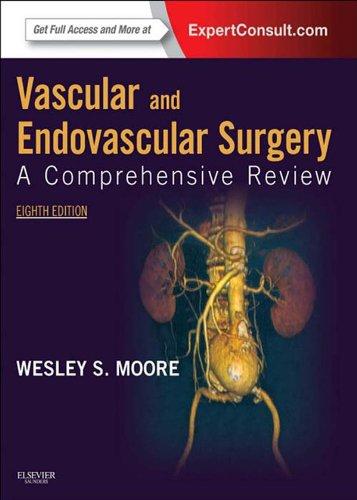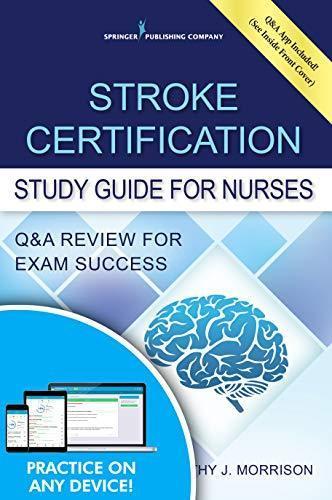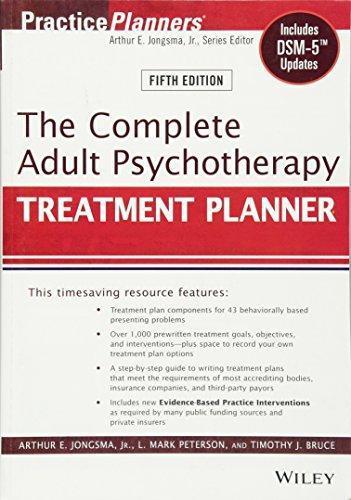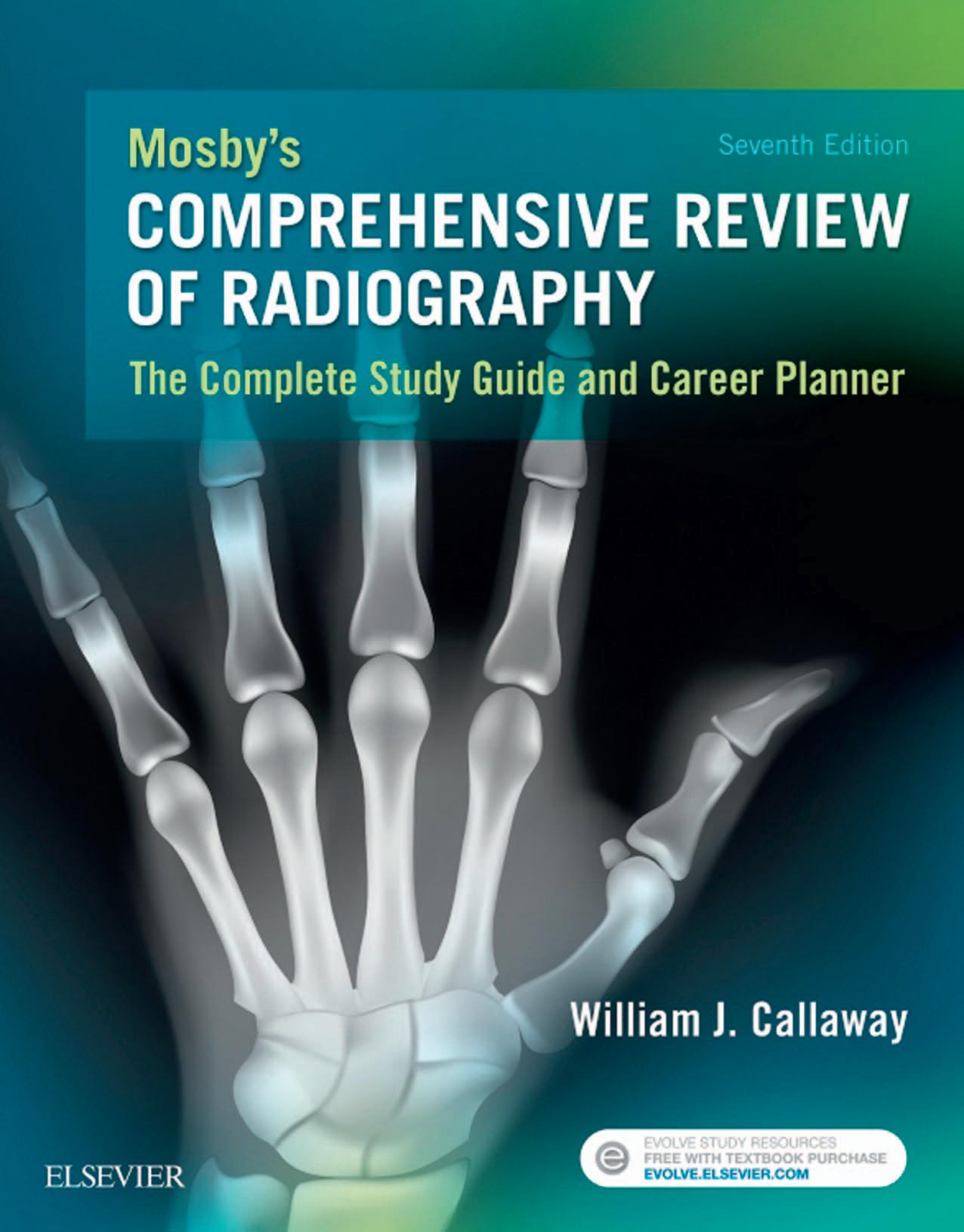1 Preparation for Review
Welcome to Your Study Guide and Career Planner!
Congratulations on acquiring the most complete study guide available to prepare for radiography classes throughout the educational program and to master the radiography certification exam. This student-friendly guide, coupled with your commitment to excellence and management of study time, will take you on a journey culminating in the achievement of your goals.
By reviewing the major subject areas contained in Part One, “Review and Study Guide,” of this book, answering and studying the exam questions in the text and online resource, and understanding the skills involved in various areas of radiography, you will be well on your way to achieving the goal of excelling in class and passing the radiography exam.
Passing the courses and the exam is only one of several steps in building your new career, however. As you look toward graduation, you are probably contemplating your transition into the work environment or considering further education. In addition to preparing you thoroughly for the exam, this book helps you develop your career goals. In Part Two, “Career Planning,” you will have an opportunity to describe the events that have been rewarding and motivating during your education. This activity will enable you to set goals for establishing your practice of medical radiography and to plan for either immediate employment or continued education.
The most important tools used during the transition into the workforce are the resume and the interview, which are covered in Chapters 8 and 9 to prepare you thoroughly for marketing yourself in today’s ever-changing health care environment. So that you may be fully aware of your role as an entry-level radiographer, Chapter 10 is dedicated to helping you anticipate on-the-job expectations for your first postgraduate position. The competitive and, at times, chaotic nature of health care delivery requires that you understand these expectations well as you prepare your first resume or have your first interview. This information is presented to ease your transition from student to entry-level radiographer.
Because the American Registry of Radiologic Technologists (ARRT) requires proof of continuing education for
recertification, this important topic is included in Chapter 7, “Career Paths.” Chapter 7 also addresses advanced-level exams, academic degrees, and many options available to you as you plan your professional career.
If you are using this text as a program-long study guide, you will want to become familiar with Chapters 2, 3, 4, and 5 quickly. These chapters may be used as a supplement to the text you have for each course in your program. They are effective for a quick overview of subject matter and a review before a quiz or test. Whether using this guide throughout the program or as a Registry review, be sure to take time with the rest of Chapter 1. A key to success in your classes and the radiography exam is prioritizing and managing your time. Investing time now in this chapter will pay big dividends as your review process moves along in an organized fashion.
Prioritizing Subjects and Scheduling Study Time
Determining the Length of Review
As you begin the task of planning your review for the ARRT exam, take a few moments to think about how you want to go about the review process. It is never too early to begin studying for the exam. Because you may take the exam immediately after graduation, you will probably want to begin your review very soon. If you are also using this text as a study guide throughout your radiography program, you are already becoming familiar with the topics and use of the book. Most radiography educators recommend that students begin a well-thought-out review approximately 6 months before taking the exam. Not all students require that much time to prepare adequately; students who are better able to retain the material they have already learned may complete their review more quickly.
Another factor that can greatly influence how far in advance you should begin studying is the amount of time you have available. In all likelihood, you are beginning to review while still taking other courses in your educational program. Those courses must be given a high priority as you begin budgeting your time. It does little good to review for the certification exam only to find that you are hopelessly
behind in another required course. In addition, you may have employment obligations that take up a considerable amount of time or family commitments that must not be allowed to falter while you prepare for the exam. Be aware, however, that exam preparation takes a lot of time and that your success depends on it.
Begin reviewing at least 6 months before the exam. If you need to begin reviewing earlier, based on the exercises that follow, then do so. If you finish your review before 6 months is up, you can either stop reviewing or go back over the material in less detail one more time. If you wait to begin reviewing only 3 or 4 months before the exam, you may have insufficient time to go over the material thoroughly and, as a result, may need to postpone your exam date.
Before you begin budgeting your review time, consider the suggestions and encouragement provided by your instructors, who probably have several years’ experience in working with students about to prepare for the exam. Their wisdom and advice should be taken seriously. If you follow the routine they suggest and the guidelines contained in this review book, you should be more than adequately prepared to pass the exam. Remember, however, that managing the quality and quantity of your review time is ultimately up to you. Although your educational program may include some review classes, do not rely on them alone. Your own personal review is crucial to passing the exam. Now that you have successfully reached this point in your educational program, you should use your energy, time, and skills wisely during these final months of preparation. Just as with running a race, finish strong!
Planning the Review Process
If one advances confidently in the direction of his dreams, and endeavors to lead the life which he has imagined, he will meet with a success unexpected in common hours.
HENRY DAVID THOREAU
It is now time to turn your attention to the review process and begin to set priorities. Look through the chapters containing the review material if you have not already done so. In the following space provided, make a list of the subject areas in which you feel particularly strong or weak. By listing the subject areas in this way, you will be able to prioritize the material you need to cover. Second-year radiography students preparing for the exam commonly make the mistake of reviewing the easiest material first. This is the opposite of what you should do.
Weakest Subjects
Strongest Subjects
Look again at the entries you made. Transfer these subjects to the spaces that follow, ranking the weakest subjects first. Then progress in order to the subjects in which you are strongest.
Priority of Study Topics, Weakest to Strongest I need to study the following subjects in this order:
The rationale for studying more difficult content first is twofold: (1) The more difficult material will require more time, which you will have in greater supply at the beginning of the 6-month period than at the end; (2) if you have had serious difficulty with some of the subject areas and you study those first, you will have additional time to seek explanation from your instructors and to read the material again. Save for last the subjects with which you are most comfortable. These will require the least amount of study time and, if your time becomes limited, reviewing them quickly will not be as detrimental.
The time you spend now on planning a study calendar and prioritizing your study needs will pay great dividends as you begin the review process. Such planning should allow you to proceed more efficiently and dedicate more time to studying. If you are not filling in a calendar or prioritizing your study needs as you read this chapter, take the time right now to select a day and time within the next 5 days when you will reread Chapter 1 and follow the directions for time management and prioritizing.
______ I have completed my planner calendar and prioritized my subject areas for study.
______ I will complete my planner calendar and prioritize my subject areas for study on ______ (day), ______ (date) at ______ a.m./p.m.
Now that you have established your priorities or made an appointment with yourself to plan your calendar, you have set your first goal for reviewing and passing the certification exam. Even more important, you have taken the initial step toward your first radiography job or continued education. Be sure to congratulate yourself on accomplishing this task, and then finish reading this chapter.
Although some may scoff at your calendar planning and the amount of time you choose to spend reviewing, others may feel you are not spending enough time preparing. If you are receiving conflicting advice, you may become confused by all of the suggestions, hints, and guidelines. You should refer to the suggestions made by your instructors and the suggestions contained in this study guide.
Scheduling Your Study Time
Go through the process of planning your study time and evaluating your commitments so that you may set goals for reviewing all of the material. Browse through Chapters 2 through 5 and briefly refresh your memory about the topics. Are there large amounts of information that you can’t recall? Is information there that you have never seen before? Does most of it look familiar, and is it easy to recall?
Try answering a few of the exam questions after each section, and sample some of the questions from the comprehensive exams in Chapter 6. Were you able to answer the questions easily? Do you feel confident about your answers, or were they educated guesses? How many did you get correct compared with the number you missed? Are there specific subject areas in which you feel particularly strong or weak? Will you need to spend more time studying one area than another? You have to answer all of these questions as
you attempt to budget your review time. Pause now to consider each of them carefully.
If you are already using some form of a daily, weekly, or monthly calendar, either on paper or on an electronic device, to plan your study time, you simply need to decide where within your study schedule to include your review. If you have not been using a calendar to budget your time, this is a great time to start. You don’t have to buy an expensive time planner. Most students use a calendar with squares large enough to write in times and planned activities. Others plan their time using the software in their particular brand of smartphone, tablet, or other mobile device. Figure 1-1 is an example of a tablet-based calendar being used to budget time for current classes and for review.
The importance of writing study time on a calendar cannot be overemphasized. You are much more likely to adhere to a study schedule if you have thought it through, written it down, and posted it where you see it daily. It is highly recommended that once you plan your review time, you print a copy of your calendar and give it to your instructor. Educators can be powerful motivators by occasionally reminding a student of a written commitment to review. Filling in a calendar in this way is also a form of establishing a written contract with yourself. In so doing, you recognize that only you are ultimately responsible for covering the review material. If the college or hospital you are attending provides you access to a study skills department, meet with
• Figure 1-1 Calendar for scheduling study time.
one of the professionals there, share your ideas for time and study management, and gain even more support for attaining your goals.
When you are setting up a review calendar, being regular and consistent is important. Set aside specific times to review on a regular basis. Don’t save review for times when you have nothing else to do. State your commitment in such terms as the following: “I will review physics every Thursday evening for the next 8 weeks for approximately 2 hours each time.” This contract with yourself describes the activity, the time commitment, and the subject involved. Avoid such entries as “I will study physics four times this month.” There is little commitment to that statement, and the goal it sets forth is not likely to be accomplished.
As an adult learner, you have probably developed an awareness of your strengths and weaknesses relative to time management and commitment to studies. Whatever your self-appraisal, the fact that you are using this book suggests that you are a successful student with the capability to manage your time effectively. You should now spend some time applying your scheduling and time management skills to the planning of your review.
If you are allotting at least 6 months to prepare for the exam, you should have plenty of time to cover all of the material and take and review the exams in this book and online. If you do all of the expected regular studies and review, you should have little difficulty on the exam. I hope that by the time you take the exam, you will regard it as just another quiz.
Study Habits
Study habits mirror the individuality of each student. Some students prefer to study alone. They may read small sections of a chapter at a time, pausing to reflect on the content and taking additional notes, if necessary, or they may recite the material aloud. Others choose to read over a section or an entire chapter many times, reviewing the material to facilitate their recall. Some students find it helpful to study in groups, taking turns quizzing one another and answering practice questions.
By now, you probably have formed your own set of effective study habits. In using this book to prepare for the exam, you should consider every suggestion that may improve your method of study. However, do not greatly alter study habits that have already proved successful. Also, keep in mind that as you review for the exam, you should not be learning new material. By definition, a review should be a revisiting of material that you have already learned and learned well. In addition, your review should be as comprehensive as possible, including all of the topics.
Before discussing study habits, let’s address concerns that many second-year students have after talking with others who have recently taken the exam. You may have been told to give little attention to certain subject areas because they did not appear on the exam. You may hear that the
exam was particularly easy and that you should not worry about it. You may also be surprised to hear such comments as “There was almost no positioning on the exam” or “It was all physics!” The radiography exam adheres to content specifications that are included in this chapter. In most cases, when test takers think one category had significantly more questions than another category, this is a reflection of their command of the category’s content or of their preparation, or lack thereof, for the exam. Although individuals who are providing you with feedback about the exam may have good intentions, the reliability of their memory of the exam items is questionable. Besides, because of the size of the item bank for the exam, the questions vary each time the exam is administered. Even if the individuals with whom you are speaking accurately recall the exam content, you will not be answering the same set of questions on your exam. Each radiography exam is different from the preceding exam.
Most importantly, you should be aware that passing along test question content is a violation of the ARRT Standards of Ethics, specifically addressed in the Rules of Ethics. It is best to avoid such conversations from both preparation and ethical standpoints. Finally, by choosing to ignore advice from even the most well-intentioned person who has recently taken the exam and instead following the study routine that you are planning under the guidance of your instructors and this book, you will guarantee that you are the one controlling the exam outcome and can be assured that you are undertaking the best preparation for the exam.
A few reminders about study habits or study conditions are in order. Remember to choose your most difficult subjects to study first. You have already listed these in the previous section. When you study, be sure you have set aside time when you can be quiet with no interruptions. Some people study better with soft music in the background, whereas others prefer silence. Other types of music and television simply interfere with concentration. Although you should be comfortable while studying, you should not be too comfortable. Remaining upright is particularly important.
Take regular but infrequent breaks. Be sure that lighting is adequate and the room temperature is controllable and comfortable. Arrange the study conditions so that you can focus all of your attention on what you are doing. Regardless of the study method used, quiet concentration is of utmost importance. You may wish to reinforce your learning by reciting the material aloud—a practice requiring a study setting that is isolated and free from distractions. In addition, study at the time of day when your mind is most alert. Some students prefer to study early in the morning, whereas others have found that they study better later in the afternoon or early evening. Cramming late at night or into the early hours of the morning is ineffective for most individuals. Besides, if review is a priority, you will want to assign it an important place in your schedule.
Exam Specifications
Although the specifications for the ARRT radiography exam (Table 1-1) do not divulge specific questions, they do give the reader the outline from which the exam is constructed. In addition, the approximate number of questions in each category is listed to allow you to see the relative importance placed on the different subject areas.
KEY REVIEW POINTS
• Begin at least 6 months before test day.
• Perform an inventory of strengths and weaknesses by topic.
• Commit your study schedule to a calendar.
• Base your review on ARRT exam specifications; avoid coaching from previous test takers.
• Use study habits that have proven successful in the past.
• Study difficult subjects first.
• Study with no interruptions.
• Be comfortable when studying, but not too comfortable.
• Review during the time of day when you are most alert.
You may wonder why these particular categories were selected for the exam and are weighted in this way. The ARRT periodically performs an extensive study called a task inventory. The result (see Chapter 10) for radiographers lists all of the specific skills normally performed by an entry-level radiographer. The skills in the task inventory should coincide with the terminal competencies of all approved educational programs. From this task inventory, the categories for the exam are
constructed, and the relative importance of each is weighted. The review of the major categories on the exam is covered in the next four chapters.
Analysis of Category Components
An approximate number of questions for each of the major subject areas is shown in the detailed list that follows.* The number of questions of subcategory content within the major areas are general guidelines and may vary to a certain extent with each exam administration.
Patient Care (33 questions)
1. Patient Interactions and Management (33)
A.
Ethical and Legal Aspects
1. Patient’s Rights
a. informed consent (e.g., written, oral, implied)
b. confidentiality (HIPAA)
c. American Hospital Association (AHA) Patient Care Partnership (Patient’s Bill of Rights)
1. privacy
2. extent of care (e.g., DNR)
3. access to information
4. living will, health care proxy, advanced directives
5. research participation
2. Legal Issues
a. verification (e.g., patient identification, compare order to clinical indication)
b. common terminology (e.g., battery, negligence, malpractice, beneficience)
c. legal doctrines (e.g., respondeat superior, res ipsa loquitur)
d. restraints versus immobilization
e. manipulation of electronic data (e.g., exposure indicator, processing algorithm, brightness and contrast, cropping or masking off anatomy)
3. ARRT Standards of Ethics
B. Interpersonal Communication
1. Modes of Communication
a. verbal/written
b. nonverbal (e.g., eye contact, touching)
2. Challenges in Communication
a. interaction with others
1. language barriers
2. cultural and social factors
3. physical or sensory impairments
4. age
5. emotional status, acceptance of condition
b. explanation of medical terms
c. strategies to improve understanding
From The American Registry of Radiologic Technologists® Radiography examination content specifications, St Paul, MN, 2015. Implementation date January 2017.
* From American Registry of Radiologic Technologists: Radiography examination content specifications, St Paul, MN, 2015, ARRT. Implementation date January 2017.
3. Patient Education
a. explanation of current procedure (e.g., purpose, exam length)
b. verify informed consent when necessary
c. pre- and post-examination instructions (e.g., preparation, diet, medications and discharge instructions)
d. respond to inquiries about other imaging modalities (e.g., CT, MRI, mammography, sonography, nuclear medicine, bone densitometry regarding dose differences, types of radiation, patient preps)
C. Physical Assistance and Monitoring
1. Patient Transfer and Movement
a. body mechanics (e.g., balance, alignment, movement)
b. patient transfer techniques
2. Assisting Patients with Medical Equipment
a. infusion catheters and pumps
b. oxygen delivery systems
c. other (e.g., nasogastric tubes, urinary catheters, tracheostomy tubes)
3. Routine Monitoring
a. vital signs
b. physical signs and symptoms (e.g., motor control, severity of injury)
c. fall prevention
d. documention
D. Medical Emergencies
1. Allergic Reactions (e.g., contrast media, latex)
2. Cardiac or Respiratory Arrest (e.g., CPR)
3. Physical Injury or Trauma
4. Other Medical Disorders (e.g., seizures, diabetic reactions)
E. Infection Control
1. Cycle of Infection
a. pathogen
b. reservoir
c. portal of exit
d. mode of transmission
1. Direct
a. droplet
b. direct contact
2. Indirect
a. airborne
b. vehicle borne-fomite
c. vector borne-mechanical or biological
e. portal of entry
f. susceptible host
2. Asepsis
a. equipment disinfection
b. equipment sterilization
c. medical aseptic technique
d. sterile technique
3. CDC Standard Precautions
a. hand hygiene
b. use of personal protective equipment (e.g., gloves, gowns, masks)
c. safe injection practices
d. safe handling of contaminated equipment/surfaces
e. disposal of contaminated materials
1. linens
2. needles
3. patient supplies
4. blood and body fluids
4. Transmission-Based Precautions
a. contact
b. droplet
c. airborne
5. Additional Precautions
a. neutropenic precautions (reverse isolation)
b. healthcare associated (nosocomial) infections
F. Handling and Disposal of Toxic or Hazardous Material
1. Types of Materials
a. chemicals
b. chemotherapy
2. Safety Data Sheet (e.g., material safety data sheets)
G. Pharmacology
1. Patient History
a. medication reconciliation (current medications)
b. premedications
c. contraindications
d. scheduling and sequencing exams
2. Administration
a. routes (e.g., IV, oral)
b. supplies (e.g., enema kits, needles)
3. Venipuncture
a. venous anatomy
b. supplies
c. procedural technique
4. Contrast Media Types and Properties (e.g., iodinated, water soluble, barium, ionic versus non-ionic)
5. Appropriateness of Contrast Media to Exam
a. patient condition (e.g., perforated bowel)
b. patient age and weight
c. laboratory values (e.g., BUN, creatinine, GFR)
6. Complications/Reactions
a. local effects (e.g., extravasation/infiltration, phlebitis)
b. systemic effects
1. mild
2. moderate
3. severe
c. emergency medications
d. radiographer’s response and documentation
Safety (53 questions)
Radiation Physics and Radiobiology (22)
A. Principles of Radiation Physics
1. X-Ray Production
a. source of free electrons (e.g., thermionic emission)
b. acceleration of electrons
c. focusing of electrons
d. deceleration of electrons
2. Target Interactions
a. bremsstrahlung
b. characteristic
3. X-Ray Beam
a. frequency and wavelength
b. beam characteristics
1. quality
2. quantity
3. primary versus remnant (exit)
c. inverse square law
d. fundamental properties (e.g., travel in straight lines, ionize matter)
4. Photon Interactions with Matter
a. Compton effect
b. photoelectric absorption
c. coherent (classical) scatter
d. attenuation by various tissues
1. thickness of body part
2. type of tissue (atomic number)
B. Biological Aspects of Radiation
1. SI Units of Measurement
a. absorbed dose
b. dose equivalent
c. exposure
d. effective dose
e. air kerma
2. Radiosensitivity
a. dose-response relationships
b. relative tissue radiosensitivities (e.g., LET, RBE)
c. cell survival and recovery (LD50)
d. oxygen effect
3. Somatic Effects
a. short-term versus long-term effects
b. acute versus chronic effects
c. carcinogenesis
d. organ and tissue response (e.g., eye, thyroid, breast, bone marrow, skin, gonadal)
4. Acute Radiation Syndromes
a. hematopoietic
b. gastrointestinal (GI)
c. central nervous system (CNS)
5. Embryonic and Fetal Risks
6. Genetic Impact
a. genetic significant dose
b. goals of gonadal shielding
2. Radiation Protection (31 questions)
A. Minimizing Patient Exposure (ALARA)
1. Exposure Factors
a. kVp
b. mAs
c. automatic exposure control (AEC)
2. Shielding
a. rationale for use
b. types
c. placement
3. Beam Restriction
a. purpose of primary beam restriction
b. types (e.g., collimators)
4. Filtration
a. effect on skin and organ exposure
b. effect on average beam energy
c. NCRP recommendations (NCRP #102, minimum filtration in useful beam)
5. Patient Considerations
a. positioning
b. communication
c. pediatric
d. morbid obesity
6. Radiographic Dose Documentation
7. Image Receptors
8. Grids
9. Fluoroscopy
a. pulsed
b. exposure factors
c. grids
d. positioning
e. fluoroscopy time
f. automatic brightness control (ABC) or automatic exposure rate control (AERC)
g. receptor positioning
h. magnification mode
i. air kerma display
j. last image hold
k. dose or time documentation
l. minimum source-to-skin distance (21 CFR)
10. Dose Area Product (DAP) Meter
B. Personnel Protection
1. Sources of Radiation Exposure
a. primary x-ray beam
b. secondary radiation
1. scatter
2. leakage
c. patient as source
2. Basic Methods of Protection
a. time
b. distance
c. shielding
3. Protective Devices
a. types
b. attenuation properties
c. minimum lead equivalent (NCRP #102)
4. Special Considerations
a. mobile units
b. fluoroscopy
1. protective drapes
2. protective Bucky slot cover
3. cumulative timer
4. remote-controlled fluoroscopy
c. guidelines for fluoroscopy and mobile units (NCRP #102, 21 CFR)
1. fluoroscopy exposure rates (normal and high-level control)
2. exposure switch guidelines
5. Radiation Exposure and Monitoring
a. dosimeters
1. types
2. proper use
b. NCRP recommendations for personnel monitoring (NCRP #116)
1. occupational exposure
2. public exposure
3. embryo/fetus exposure
4. dose equivalent limits
5. evaluation and maintenance of personnel dosimetry records
6. handling and disposal of radioactive material
Image Production (50 questions)
1. Image Acquisition and Technical Evaluation (21)
A. Selection of Technical Factors Affecting Radiographic Quality
(X indicates topics covered on the examination.)
Factors Affecting Radiographic Quality
a. mAs X
b. kVp X X
c. OID X (air
d. SID X X X
e. focal spot size X
f. grids* X X
g. tube filtration X X
h. beam restriction X X
i. motion X
j. anode heel effect X
k. patient factors (size, pathology) X X X X
l. angle (tube, part, or receptor) X X
*Includes conversion factors for grids.
B. Technique Charts
1. Anatomically Programmed Technique
2. Caliper Measurement
3. Fixed Versus Variable kVp
4. Special Considerations
a. casts
b. pathologic factors
c. age (e.g., pediatric, geriatric)
d. body mass index (BMI)
e. contrast media
C. Automatic Exposure Control (AEC)
1. Effects of Changing Exposure Factors on Radiographic Quality
2. Detector Selection
3. Anatomic Alignment
4. Exposure Adjustment (e.g., density, +1 or −1)
D. Digital Imaging Characteristics
1. Spatial Resolution (equipment related)
a. pixel characteristics (e.g., size, pitch)
b. detector element (DEL) (e.g., size, pitch, fill factor)
c. matrix size
d. sampling frequency
2. Contrast Resolution (equipment related)
a. bit depth
b. modulation transfer function (MTF)
c. detective quantum efficiency (DQE)
3. Image Signal (exposure related)
a. dynamic range
b. quantum noise (quantum mottle)
c. signal-to-noise ratio (SNR)
d. contrast-to-noise ratio (CNR)
E. Image Identification
1. Methods (e.g., radiographic, electronic)
2. Legal Considerations (e.g., patient date, examination data)
2. Equipment Operation and Quality Assurance (29 questions)
A. Imaging Equipment
1. Components of Radiographic Unit (fixed or mobile)
a. operating console
b. x-ray tube construction
1. electron source
2. target materials
3. induction motor
c. automatic exposure control (AEC)
1. radiation detectors
2. back-up timer
3. exposure adjustment (e.g., density, +1 or −1)
4. minimum response time
d. manual exposure controls
e. beam restriction
2. X-Ray Generator, Transformers, and Rectification System
a. basic principles
b. phase, pulse, and frequency
c. tube loading
3. Components of Fluoroscopic Unit (fixed or mobile)
a. image receptors
1. image intensifier
2. flat panel
b. viewing systems
c. recording systems
d. automatic brightness control (ABC) or automatic exposure rate control (AERC)
e. magnification mode
f. table
4. Components of Digital Imaging
a. CR components
1. plate (e.g., photo-stimulable phosphor (PSP))
2. plate reader
b. DR image receptors
1. flat panel
2. charge coupled device (CCD)
3. complementary metal oxide semiconductor (CMOS)
5. Accessories
a. stationary grids
b. Bucky assembly
c. compensating filters
B. Image Processing and Display
1. Raw Data (pre-processing)
a. analog-to-digital convertor (ADC)
b. quantization
c. corrections (e.g., rescaling, flat fielding, dead pixel correction)
d. histogram
2. Corrected Data for Processing
a. grayscale
b. edge enhancement
c. equalization
d. smoothing
3. Data for Display
a. values of interest (VOI)
b. look-up table (LUT)
4. Postprocessing
a. brightness
b. contrast
c. region of interest (ROI)
d. electronic cropping or masking
e. stitching
5. Display Monitors
a. viewing conditions (e.g., viewing angle, ambient lighting)
b. spatial resolution (e.g., pixel size, pixel pitch)
c. brightness and contrast
6. Imaging Informatics
a. DICOM
b. PACS
c. RIS (modality work list)
d. HIS
e. EMR or EHR
C. Criteria for Image Evaluation of Technical Factors
1. Exposure Indicator
2. Quantum Noise (quantum mottle)
3. Gross Exposure Error (e.g., loss of contrast, saturation)
4. Contrast
5. Spatial Resolution
6. Distortion (e.g., size, shape)
7. Identification Markers (e.g., anatomic side, patient, date)
8. Image Artifacts
9. Radiation Fog
D. Quality Control of Imaging Equipment and Accessories
1. Beam Restriction
a. light field to radiation field alignment
b. central ray alignment
2. Recognition and Reporting of Malfunctions
3. Digital Imaging Receptor Systems
a. maintenance (e.g., detector calibration, plate reader calibration)
b. QC tests (e.g., erasure thoroughness, plate uniformity, spatial resolution)
c. display monitor quality assurance (e.g., grayscale standard display function, luminance)
4. shielding accessories (e.g., lead apron, glove testing)
Procedures (64 questions)
This section addresses imaging procedures for the anatomic regions listed below. Questions cover the following topics:
1. Positioning (e.g., topographic landmarks, body positions, path of central ray, immobilization devices, respiration)
2. Anatomy (e.g., including physiology, basic pathology, and related medical terminology)
3. Procedure adaptation (e.g., body habitus, body mass index, trauma, pathology, age, limited mobility)
4. Evaluation of displayed anatomic structures (e.g., patient positioning, tube-part-image receptor alignment)
Head, Spine, and Pelvis Procedures (18 questions)
A. Head
1. Skull
2. Facial Bones
3. Mandible
4. Zygomatic Arch
5. Temporomandibular Joints
6. Nasal Bones
7. Orbits
8. Paranasal Sinuses
B. Spine and Pelvis
1. Cervical Spine
2. Thoracic Spine
3. Scoliosis Series
4. Lumbar Spine
5. Sacrum and Coccyx
6. Myelography
7. Sacroiliac Joints
8. Pelvis and Hip
9. Hystersalpingography
